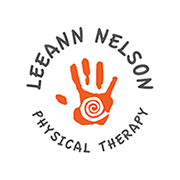Vestibular disorders can cause disequilibrium presenting as imbalance, unsteadiness, falls, near falls, staggering, stumbling, veering or lack of “surefootedness.” Vestibular disorders may also be accompanied by headaches, neck and back pain, increased motion sickness, nausea, increased sensitivity to noise and bright lights, difficulty with vision especially in areas of low lighting or full field stimulus (busy carpets, clutter, busy wallpaper, heavy traffic areas).
GOALS
Measurable goals based on objective measures:
- resolve BPPV (negative Dix-Hallpike)
- increase gaze stability (Dynamic visual Acuity)
- decrease postural sway (mCTSIB)
- improve balance strategies (stepping)
- improve gait abnormalities (Dynamic Gait Index)
- decrease motion sensitivity (Motion Sensitivity Quotient)
- decrease subjective c/o dizziness (Dizziness Handicap Index)
- independent Home Exercise Program of static, dynamic and ADL-incorporated challenges to the Vestibular system.
